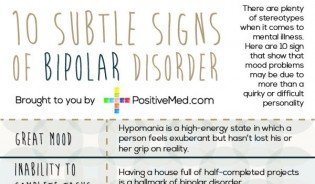
Here’s Scientific Explanation of What People Feel a Minute Before Death
Reports of near-death experiences are fairly common. The caveat: If a person is able to report, then obviously death did not occur. Doctors and those observing agree that the person was dying at one point, and the reports are verifiable and can be compared to others with similar experiences. Bright light is seen by around eight percent of those returning from near-death experiences.
Medical science postulates the light to be a torrent of phosphenes from the pineal gland. Delirium and agitation may cause frank delusions due to medication or metabolic changes. At times, unusual conscious awareness may surface, and memories from the past may become vividly detailed, as though they occurred within the hour. People unseen by others are reported as standing by.
It is more difficult to explain reports of leaving the body, entering another dimension, viewing one’s body from above it and other supernatural reports.
A study conducted by researcher Sam Parnia of those resuscitated after cardiac arrest revealed the feelings of 63 patients directly before they ‘died’. The study was conducted over a 12-month period at Southampton General Hospital. While only a minority of these persons recalled awareness of inevitable death, their descriptions of feeling content, jumping lightly from a mountain and entering the borders of another place were generally peaceful.
The patients able to recall most of their experience had the highest brain-oxygen levels. Researchers once explained a rush of near-death visions and out-of-body experiences as oxygen starvation. Instead, better oxygenation might mean better ability to commit these experiences to memory.
Two patients in a later study involving 15 European and United States hospitals reported strange, out-of-body adventures, describing their emergency resuscitation in detail.
But how to prove the reports factual, and not simply the final flash of a dying brain? A very simple solution was devised using boards suspended from ceilings throughout the hospital. The boards had writing and figures painted on their upper sides. It seems reasonable that, at some point, a patient in the dying throes of an out-of-body experience would read and report upon the figured boards with resuscitation. At this writing, no one has recollected reading the boards, but they are a simple and ingenious method to record hard evidence for these otherworldly reports.
RELATED ARTICLE: TEEN TOOK JUST ONE HIT OF THIS “SPICE” AND DIED BECAUSE OF IT
For many people, death remains a strange and frightening phenomenon that will occur sometime in the future. Humans become aware of death at an early age, but not until full maturity do they grasp the strict finality of oblivion. Must mature people can compare the moment of death to the nullity they experience when trying to recall events before the age of infantile memory.
Cultural input like horror movies and other traditional tales rouse real terror in many, but they serve a purpose. These frightening tales are really a way for humans to cope with the instinctive terror of imminent death, while breathing a sigh of relief that the horrible story happened to an imaginary person.
Questions about death like: Will I be able to say goodbye? Will I ask forgiveness of those I’ve wronged? Seem foremost in many peoples’ concerns. These questions are culturally induced as well. Scientists and observers concur that death is a physical process, and, like birth, occurs in steps towards an inevitable end.
Death for the debilitated and elderly may begin weeks before actual demise. A person will feel the need to eat and drink less frequently as the hour approaches. This may be due to metabolic changes, the slowing of peristalic function. Sleepiness, cooler bodily temperature and disinterest in former activities will occur. Bodily temperature regulations become erratic, the person may experience a high fever and later, sharp coldness. Extreme weakness is common, and a person will need assistance to perform bodily functions with dignity.
Arms and legs become blotchy and bruised-appearing as circulatory functions slow, and renal output decreases to a sparse, dark brown or red. Vision becomes impaired, but sometimes a dying person appears to hallucinate. Visual hallucinations are very routine as death approaches.
Finally, the person lapses into deep, comatose sleep, and loud rattly breathing can be heard. This is the final sign of the imminent journey all will take.






